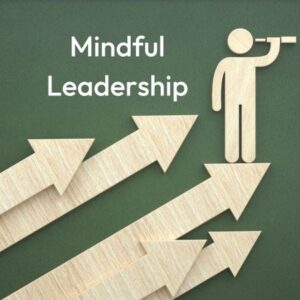In We Thrive, we understand work as vital to the whole person. In the course of work, we learn to “regulate” by meeting challenges and its accompanying pressures head-on; to “relate” by working together with different people with different histories and perspectives; and to “reflect towards wise action” by considering how our work aligns with what is truly important to us. When pursued with mindfulness and compassion, work helps us grow not just in our careers but in our ability to live out lives as well-rounded human beings.
But of course, work has its issues.
Despite the lessons which the COVID-19 pandemic should have taught us about self-care and self-compassion, we remain tangled with a work ethic that prioritizes “productivity” at the expense of everything else. Unfortunately, this work ethic also bred a resistance to, and even fear of, seeking help, so used are we to the idea of “toughing it out”.
Despite increasing visibility of the importance of mental health, we are still uncertain about how this might play out within companies and industries. And on the level of the individual, we are still working out, in the aftermath of a global health crisis, something as basic as what constitutes a legitimate need for assistance.
Here, we will look at one way to think about the kind of pressure you experience in the workplace, and the kind of help that you (and your workplace) may consider. Throughout this discussion, we will also be directed by this question: “Is my work nurturing my growth, or impeding it?”
Defining the pressure you need help for
There are sources of pressure, or “stress”, that are common across organizations and industries. The finer details may differ across fields, but these can be categorized into two broad categories:
- Work content, which are the various tasks involved and its accompanying costs in time, effort, and expertise. Some potential stressors under this category can include inappropriate workloads, where there may be too much or too little demands; the meaningfulness of the work, or the extent to which the job is aligned with the person’s values or sense of purpose; and autonomy, or the extent to which a person can exercise control over the work they do.
- Work context, which are the environmental and socio-cultural aspects of the job. These can include thing like the nature of relationships between colleagues, which can vary in levels of support, transparency, and general good humor; organizational culture, which can refer to policy structures and management styles that buttress the organization; and the sense of belonging within the larger work community, which refers to the extent to which a person might feel included or excluded from one’s peers or the extent to which one feels that their presence and contributions are actually valued. (WHO, 2020; Mental Help, 2015)
The response to these stressors is unique to each person, dependent not just on how intense or persistent the stressful experience is, but also on a person’s particular condition. A stressful event that might be considered “mild” for one person, which may improve functioning, might be “severe” to another, and disrupt functioning (Yaribeygi et al., 2017). But how do we tell the difference? We can do this by using two distinct categories of stress: “eustress” and “distress”.
Working with “eu-stress”
The first category of stress is eustress: the kind of stress which motivates us to face challenges successfully, learn new skills and perspectives, and provides opportunities to direct their actions towards our goals and our values. (Albort-Morant et al., 2020).
Broadly speaking, while there is definitely pressure, there is vitality. This can look like the following:
- You feel energized;
- You feel more focused;
- You feel confident you know what you’re doing (or at least you’re confident you can learn);
- You are excited by what you do; and
- You sense your productivity increasing (Shafir, 2020; Tocino-Smith, 2019).
The work may be more difficult, but the movement towards accomplishing the task elicits feelings of pleasure and a sense that one is both working well and working towards something worthwhile for themselves and for the organization.
In a phrase: eustress nurtures growth.
The help we might need here would be less about relieving pressure and more about maximizing it: how can we maximize this opportunity for growth?
In the workplace, this might mean strengthening the following areas:
- Ensuring access to mentors or peers who can offer emotional support or concrete advice for effectively addressing a challenge;
- Providing appropriate flexibility to accommodate people’s particular work needs, such as work schedules, deadlines, or work spaces;
- Building relationships between employees that ensure that people are not afraid of making mistakes or speaking up about their needs;
- Setting clear work expectations so people know exactly what they’re working towards; and so on (Peart, 2019).
Working with “di-stress”
The second general category of stress that you may (unfortunately) be more familiar with is called distress. This is the opposite of eustress: instead of motivation, energy, and a sense of purpose, there may instead be dissatisfaction, fatigue, and a lack of direction. In this situation, the strain has either fallen too short of, or more often has far surpassed, the person’s threshold. Too little stress leads to boredom, lethargy, and a propensity for catastrophizing challenges faced because there has been inadequate opportunity to learn ways to cope with and savor challenges (Szalavitz, 2011). Too much stress though and the system can be overwhelmed, unable to effectively keep up, leading to disruptions in basic life functions such as sleep and a whole host of diseases (LeBlanc and Marques, 2019).
Again speaking broadly, in contrast to eustress, distress can be understood as being sapped of vitality. This can look like the following:
- Neglecting, or feeling that you have no time or energy for, other important relationships in your life;
- Feeling unable to engage in life’s other pleasures such as exercise or rest;
- Significant physical discomfort such as stomach pains, headaches, muscle tensions — or even full-blown sickness;
- Your cognitive abilities, such as focus and judgment, are noticeably reduced; and
- Your mood is more erratic, and you have become prone to irritation, anxiety, and even sadness (Cleveland Clinic, 2021; Better Health Channel, 2012).
In this scenario, greater attention needs to be placed on relieving the pressure and addressing the manifestations of the distress: how do we return to a condition conducive for growth?
Going back to the workplace, this might mean the following:
- Ensure that any changes to job demands are made to ensure employees actually have the time and the opportunity to practice self-care;
- Address the actual sources of the distress at work, including but not limited to lack of career advancement, conflicting work demands, workloads and timelines that force employees to go over and beyond their supposed job schedules, inadequate salaries and benefits, and so on;
- Provide mental health support is both available and accessible to employees; and
- Ensure adequate support from mentors, management, and other peers (APA, 2018; CCOHS, 2023).
When do I (and my workplace) need more help?
Returning to our first question, we understand that growth is nurtured when there is both adequate pressure (“eustress”) and adequate rest. Considering the latter, we can ask ourselves whether we are getting the rest we need — and whether our workplaces allow us to engage in such without reprisal or penalty. One useful model for understanding “rest” comprehensively, in its active and passive forms, looks at seven different kinds:
- Physical Rest, such as sleep, good eating habits, and exercise;
- Mental Rest, such as engagement with non-work-related intellectually-stimulating activities such as reading and games;
- Spiritual Rest, such as activities which respond to your religious callings or other callings to a higher purpose, including prayer, charitable works, and so on;
- Emotional Rest, such as being able to express our emotions authentically in safe and compassionate environments;
- Sensory Rest, such as relieving ourselves from over-stimulation by keeping away our mobile and other computer devices;
- Social Rest, such as by engaging in pleasurable social activities or in pleasurable solitude; and
- Creative Rest, such as through different artistic endeavors (Skowron, 2022).
A rule of thumb is to check in with ourselves and if in the past two weeks that if we are either a) we are unable to get adequate rest or b) if our best efforts at getting adequate rest is insufficient to relieve our present experience of distress, then this would be a signal to start seeking help. Similarly, if an organization finds itself unable to adequately and promptly support their employees’ wellbeing needs needs for rest, then the organization itself may want to consider getting help as well.
As a final point, despite what our present culture of work tells us, seeking professional help is not a sign of weakness. Speaking to organizations, to seek help rather than to just allow our employees to “tough it out” is a sign not only of courage and strength, but a sign that we are truly taking mental health seriously — and that despite the pressures, our workplaces are places where people’s growth can be nurtured.
For mental health support services for organizations, email us at resilientteams@wethrivewellbeing.com or contact us to sign-up for sessions with our mental health clinicians.
References:
- https://www.who.int/news-room/questions-and-answers/item/ccupational-health-stress-at-the-workplace
- https://www.mentalhelp.net/stress/types-of-stressors-eustress-vs-distress/
- https://www.ncbi.nlm.nih.gov/pmc/articles/PMC7013452/
- https://www.ncbi.nlm.nih.gov/pmc/articles/PMC5579396/
- https://www.choosingtherapy.com/eustress-vs-distress/
- https://positivepsychology.com/what-is-eustress/
- https://hbr.org/2019/11/making-work-less-stressful-and-more-engaging-for-your-employees
- https://healthland.time.com/2011/12/20/the-goldilocks-principle-of-stress-too-little-is-almost-as-bad-as-too-much/
- https://www.health.harvard.edu/blog/how-to-handle-stress-at-work-2019041716436
- https://health.clevelandclinic.org/effects-of-working-too-much/
- https://www.betterhealth.vic.gov.au/health/healthyliving/work-related-stress#rpl-skip-link
- https://www.apa.org/topics/healthy-workplaces/work-stress
- https://www.ccohs.ca/oshanswers/psychosocial/stress.html
- https://www.psychologytoday.com/intl/blog/a-different-kind-of-therapy/202212/the-7-kinds-of-rest-you-need-to-actually-feel-rejuvenated




